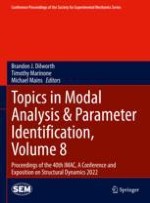2023 | OriginalPaper | Buchkapitel
10. Robust Identification of Stable MIMO Modal State Space Models
verfasst von : Mahmoud Elkafafy, Bart Peeters
Erschienen in: Topics in Modal Analysis & Parameter Identification, Volume 8
Aktivieren Sie unsere intelligente Suche, um passende Fachinhalte oder Patente zu finden.
Wählen Sie Textabschnitte aus um mit Künstlicher Intelligenz passenden Patente zu finden. powered by
Markieren Sie Textabschnitte, um KI-gestützt weitere passende Inhalte zu finden. powered by
